Using advanced computational modelling, a research team led by the University of Oxford, working in partnership with the Instituto Superior Técnico in the University of Lisbon, has achieved the first-ever real-time, three-dimensional simulations of how intense laser beams alter the ‘quantum vacuum’—a state once assumed to be empty, but which quantum physics predicts is full of virtual electron-positron pairs. Excitingly, these simulations recreate a bizarre phenomenon predicted by quantum physics, known as vacuum four-wave mixing. This states that the combined…
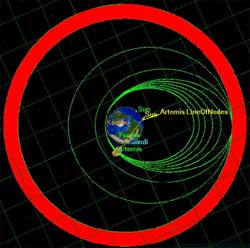
Thanks to ion propulsion, the Artemis mission is turning near-defeat into a success story. Nominal operations could start this summer, with ESA’s satellite, manufactured by Alenia Spazio as prime contractor (I), playing a significant role in the pursuit of high technology and advanced telecommunications.
On 12 July 2001, 30 minutes after lift-off from Europe’s spaceport in Kourou, French Guiana, it became apparent that the Ariane 5 launcher had propelled the Artemis satellite into a transf

Proceedings of the Royal Society Series A Vol. 458, No. 2019 Cover Date 8 March 2002
Christiaan Huygens` observations in 1665 of anti-phase synchronisation in two pendulum clocks were the subject of some of the earliest deliberations of The Royal Society but have remained a scientific puzzle. Huygens` acute observations are often quoted but have never been adequately explained – until today. The forthcoming issue of Proceedings A, a Royal Society journal, offers a simple and compelli

Researchers from the Technology Foundation STW and the University of Twente, in cooperation with Smit Transformatoren and Smit Draad, have developed a prototype coil for a superconducting transformer which is not only light and compact but also energy-efficient. A keen interest has already been expressed by several companies.
The coil is made from superconducting wires, insulated using a newly patented method. Furthermore, together with Smit Transformatoren the researchers have developed a m

In the powerful, fast-fading realm of gamma-ray bursts, scientists say they have detected for the first time a lingering afterglow of the shortest types of bursts, which themselves disappear within a second.
This afterglow, radiating in X rays, may provide crucial insight into what triggers the mysterious bursts, the most energetic explosions in the Universe, second only to the big bang in total power. Previously, scientists had only detected the afterglow of longer bursts, which can last fr

Interstellar travellers should be “motivated, tolerant and nice”.
One hundred and sixty fertile, motivated, English speakers could make it to distant stars, researchers have worked out. But generations down the line, returning voyagers may speak an alien tongue.
Travel to planets orbiting other stars will soon be technically possible, the meeting of the American Association for the Advancement of Sciences in Boston heard last week. But the 200-year odyssey will require a cer
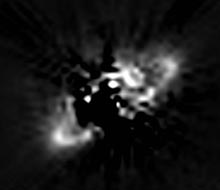
Markus Landgraf of the European Space Agency and colleagues (*) have found the first direct evidence that a bright disc of dust surrounds our Solar System, starting beyond the orbit of Saturn.
Remarkably, their discovery gives astronomers a way to determine which other stars in the Galaxy are most likely to harbour planets and allows mission planners to draw up a ’short-list’ of stars to be observed by ESA’s future planet-search missions, Eddington and Darwin.
The discovery of th
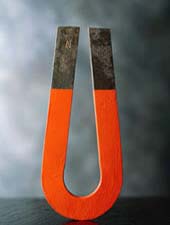
Light-sensitive ’plastic’ magnets could replace your hard drive.
A ’plastic’ magnet that responds to light could lead to new ways of storing and reading large amounts of computer data. Light would be used to store information in cheap, fast and high-capacity ’magneto-optic’ memories.
The light-switchable magnet is the first to be made from organic (carbon-based) molecules. This means its discoverers, Arthur Epstein of Ohio State University in Columbus and Joel Miller of the
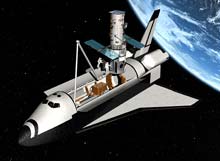
After nearly 12 years of incredible scientific discoveries, the ESA/NASA Hubble Space Telescope orbiting Earth is about to have another service visit. The purpose is to upgrade Hubble system and to install newer and more powerful instruments that will astoundingly increase Hubble’s discovery capabilities and extend the longevity of the observatory.
As a unique collaboration between the European Space Agency (ESA), and NASA, Hubble has had a phenomenal scientific impact. The unsurpassed sha

A team of physicists in the United States has made an important step towards making quantum computing a reality. Research into a new type of noiseless quantum information bit, or qubit, is published today in the joint Institute of Physics and German Physical Society journal, New Journal of Physics.
At a sub-atomic scale the laws of quantum physics lead to strange new properties of matter. For several years physicists have been trying to exploit this quantum weirdness to build a new type of `

Joint work with IETF produces XML-based solution for digital signatures, foundation for Secure Web services
The World Wide Web Consortium (W3C) has issued XML-Signature Syntax and Processing (XML Signature) as a W3C Recommendation, representing cross-industry agreement on an XML-based language for digital signatures. A W3C Recommendation indicates that a specification is stable, contributes to Web interoperability, and has been reviewed by the W3C Membership, who favor its widespread
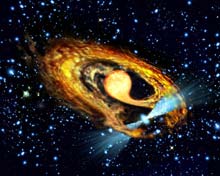
Combining Hubble Space Telescope images with radio observations has revealed a highly unusual system consisting of a fast spinning pulsar and a bloated red companion star. The existence of the system is something of a mystery – the best explanation so far is that we have our first view of a millisecond pulsar just after it has been `spun up` by its red companion star.
Although more than 90 specimens of the exotic species of fast-spinning `millisecond pulsars` are known today, no observation

A supernova may have caused mass extinction two million years ago.
The explosion of a dying star could have ended much of marine life on Earth two million years ago. The supernova could have strafed the Earth’s atmosphere with cosmic rays, severely damaging the ozone layer and exposing living organisms to high levels of the Sun’s hazardous ultraviolet rays, US researchers propose 1 .
This idea dates back to the 1950s, but now Narciso Benítez of Johns Hopkins

Is it possible to combine a three-dimensional wire model of a face with real pictures of the same face? And is it possible to get the computer that is forming the new image to follow the face even when the person in question makes sudden movements or partially covers her face with her hand? These are a couple of the research questions for the Image Coding Group at the Department of Electrical Engineering at Linköping University in Sweden. The aim is to find a new technology for information-efficient
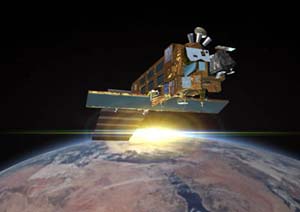
Envisat, whose launch is scheduled end of February 2002, will tirelessly sweep the Earth`s surface and atmosphere, using a suite of ten different scientific instruments.
Over a 35-day cycle, the satellite`s orbit will cover the entire planet, and then start all over again. Two thirds of the time it will be over water. Because of the sheer size of the oceanic currents, the complexity of thermal exchanges, and ocean-atmosphere coupling, the ocean is a crucial factor in explaining the w

Several years ago an “electronic nose” was developed at Linköping University in Sweden. It was based on a number of different gas sensors and programmed to differentiate between various substances in air. This nose is now being joined by a corresponding sensor for fluids, the “electronic tongue.” The principle behind the “electronic tongue” is that a number of electrodes are submerged in the fluid. When a current is turned on across the electrodes the response varies depending on the liquid’s content
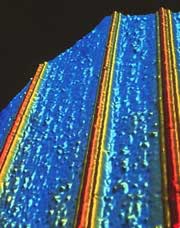
Wires one-millionth of a millimetre wide change composition along their length.
Wires one-millionth of a millimetre wide that change chemical composition along their length, just as fruit pastilles change flavour along a packet, have been grown in the United States. These multi-flavoured nanowires can act as miniature bar-codes, diodes and light sources.
Conventional microelectronics components are etched into flat layers of semiconducting material. Charles Lieber and collea